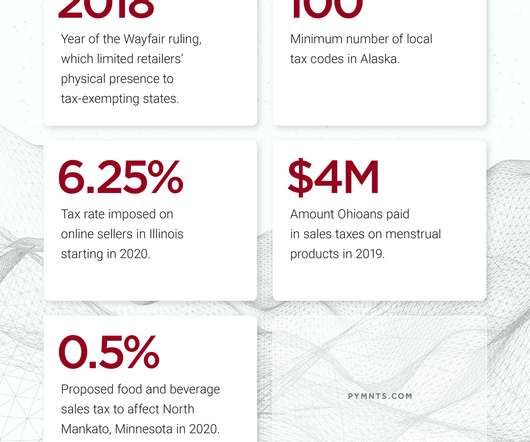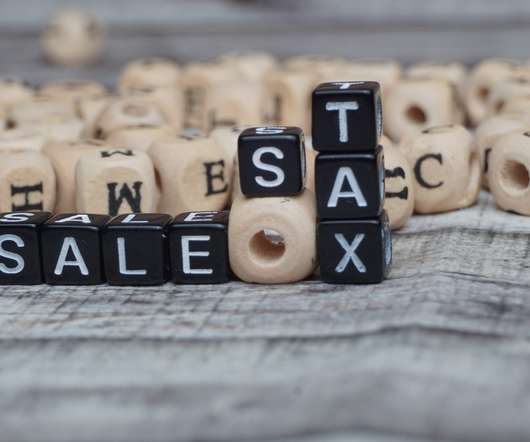The State-By-State Complexities Of Sales Tax Compliance
PYMNTS
DECEMBER 27, 2019
100: Minimum number of local tax codes in Alaska. percent: Tax rate imposed on online sellers in Illinois starting in 2020. $4M: Some states don’t tax certain essentials to make sure they are accessible to those in need, and to avoid placing the burden of public revenue on only a select number of consumers.














Let's personalize your content